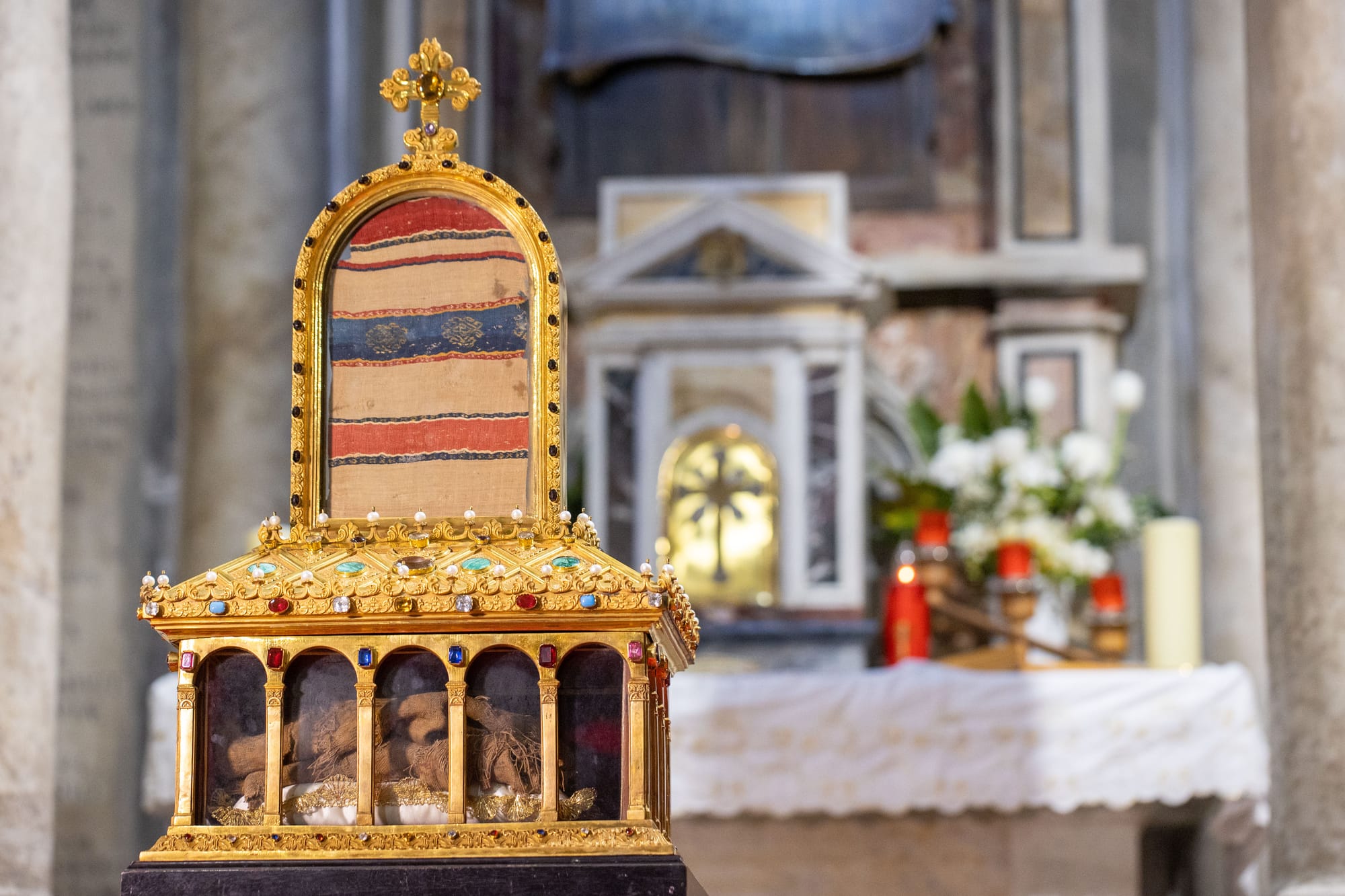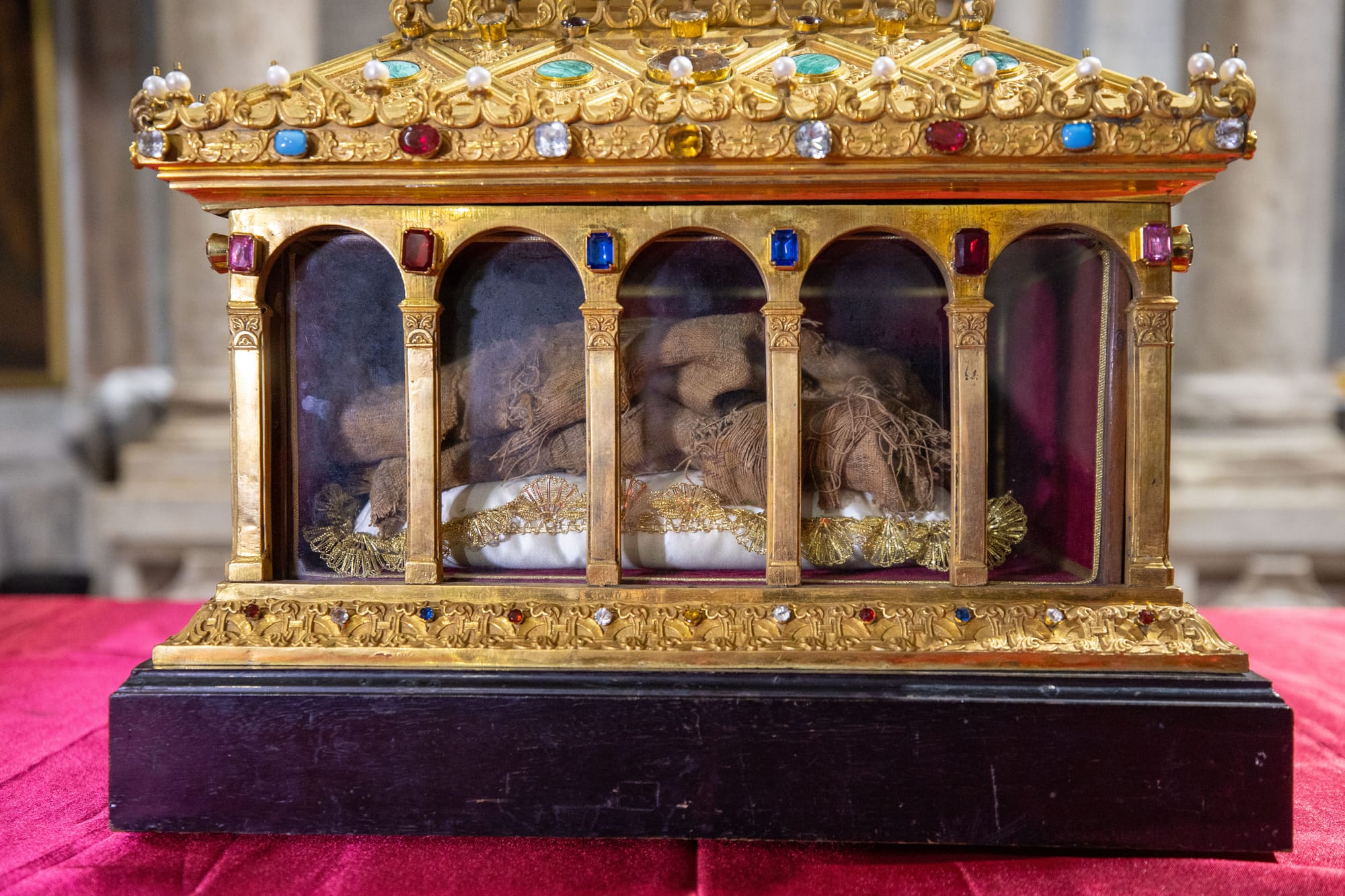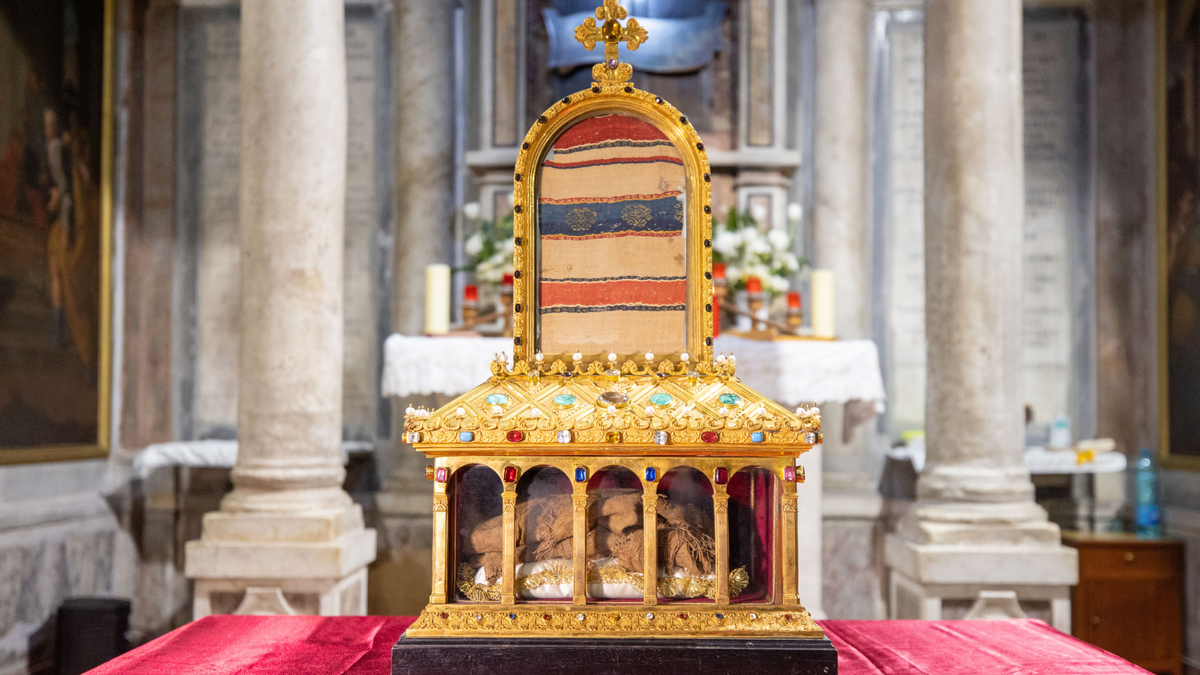There is a basilica in Rome that is the home to many relics from the first centuries of the Church, but one relic, in particular, stands out on the Feast of Saint Joseph: the mantle of Saint Joseph.
A few points tie the Basilica of St. Anastasia to this great Saint, the Patron of the Universal Church, whom we celebrate on his feast day of March 19.
Three things about Saint Joseph and his mantle
First, the basilica is especially remembered on Christmas Day in Rome. The Roman Station Churches is an ancient pilgrim itinerary that dictated, during Lent, but also other times of the liturgical year when the Pope would celebrate Mass and the local Church of Rome would gather for the liturgy
On Christmas Day when our first thoughts turn to the Holy Family, the Pope would gather at the Basilica of St. Anastasia.

Second, the relic isn’t alone. It is held in the basilica along with a relic of a still-colorful veil of the Blessed Virgin Mary. Brought to Rome by Saint Jerome in the fourth century, both relics have been in the custody of the Basilica of St. Anastasia for 1,600 years.
Third, Saint Jerome is said to have preached here against the heresy of monophysitism. This heresy claims that the Person of Jesus is only divine and not fully divine and fully human. Certainly, receiving his human nature from the Blessed Virgin Mary, the connection to Saint Joseph as foster father is highlighted.
The Basilica and its Relics
Situated at the ancient centers of power and Roman paganism, the origins of this basilica date back to the early fourth century. This makes it one of the oldest churches in Rome and one of the original parishes. Over time, it became known as titulus Sanctae Anastasiae, taking its name from one of the saints in the Roman Canon.
Anastasia, a martyr of Sirmium, was martyred in the persecution of Emperor Diocletian. Her relics were later taken to Constantinople and enshrined in a church called the Anastasis, meaning "resurrection." This connection to the Paschal mystery is significant, considering the church's role as a titular church during the Lenten season.
Not only is the basilica a Roman Station Church during Lent and for the Mass at Dawn on Christmas day, the Pope would also gather with the clergy and faithful of Rome at the basilica on Ash Wednesday to distribute ashes and then to process to the station church of the Basilica of St. Sabina.
Many precious relics have been kept here. In addition to the relics of the Holy Family, the processional crosses, or the “crux stationalis” in Latin, which were used each day during Lent were safeguarded in this basilica.
Legend of the Mantle

There is a legend about this special mantle.
Saint Joseph, whom we know to be a carpenter, needed wood for his work but lacked money. The Virgin Mary suggested he offer his wedding mantle, a gift from her, as a pledge to a lumber vendor named Ishmael.
The penny-pinching Ishmael hesitated but eventually accepted the mantle. Miracles followed. Healed of eye ulcers, both physical and spiritual harmony was brought to Ishmael’s home. His grumpy wife became kinder overnight.
Further, when the mantle was put on Ishmael's sick cow, it got better too. Grateful, Ishmael decided to keep the mantle, forgiving Joseph's debt and providing him and Mary free lumber forever.
Later, Ishmael and his wife visited the Holy Family, bringing gifts. The Virgin Mary blessed them, saying God would protect anyone under the mantle of her husband, Saint Joseph.
The physical mantle is found in a basilica of Rome, but the spiritual mantle is encountered anywhere with the following prayer:
“O, Glorious Patriarch, St. Joseph, you who were chosen by God, above all others, to be the earthly head of the Holy Family, I ask you to accept me within the folds of your holy cloak, that you may be the guardian and protector of my soul, of my family, parish, and world.
"From this moment on, I choose you as my father, protector, help, and patron — and I ask you to place me in your care — my health and well-being, my faith, my life, and my death.
“Look upon me as one of your children; defend me from all harm and from my enemies — invisible or otherwise. Assist me always in all my necessities; console me in the bitterness of life, and especially at the hour of my death.
"Say but one word for me to the Divine Savior, who you were worthy to hold in your arms, and to Mary, your Spouse.
"Ask, please, for those blessings that will lead me to Jesus. Include me among those who are dear to you and I shall try to prove myself worthy of all I know you will do.
Amen.”


